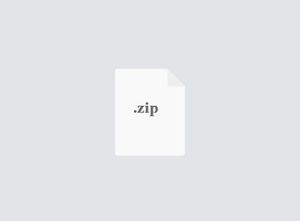$24.99

CSCI2400 Lab 1- Manipulating Bits Solution
Details
This README provides more details about the assignment and details on how to develop, debug and grade your work.
Developing & Debugging Your Puzzle Solutions
There are five steps you need to go through. Each of those steps has a rule in the Makefile to lets you focus on that step: * Write valid puzzles
(make test-coding) * Write correct puzzles (make test-correctness) * Only use allowed operations (make test-ops) * Figure out your score (make test-score) * Don't use too many operations (make test-count)
You can run all of these steps using make grade but the step-by-step methods are useful to sort out why your solution is having problems. The dlc Compiler
dlc is a modified version of an ANSI C89 compiler from that you can use to check for compliance with the coding rules for each puzzle. The dlc program only understands the C89 standard and thus enforces a stricter form of C declarations than is the case for C++ or that is enforced by gcc. Any declaration must appear in a block (what you enclose in curly braces) before any statement that is not a declaration. For example, it will complain about the following code:
int foo(int x) { int a = x; a *= 3; /* Statement that is not a declaration */ int b = a; /* ERROR: Declaration not allowed here */ b *= a; // ERROR -- this comment style causes error
The program runs silently unless it detects a problem, such as an illegal operator, too many operators, or forbidden code (if, while, etc) code in the integer puzzles.
Grading
The autograding script produces a report about 'points' -- this doesn't align with what we've described above (which is what holds). This happens in part because of the presence of the extra problems.
btest
This program checks the functional correctness of the functions in bits.c. To build and use it, type the following two commands:
unix> make unix> ./btest
Notice that you must rebuild btest each time you modify your bits.c file.
You'll find it helpful to work through the functions one at a time, testing each one as you go. You can use the -f flag to instruct btest to test only a single function: unix> ./btest -f bitOr You can feed it specific function arguments using the option flags -1, -2, and -3. For example, the following specifies the first argument is 7 and the second is 0xf. unix> ./btest -f bitOr -1 7 -2 0xf
Here are the command line options for btest: unix> ./btest -h Usage: ./btest [-hg] [-r <n>] [-f <name> [-1|-2|-3 <val>]*]
[-T <time limit>] -1 <val> Specify first function argument -2 <val> Specify second function argument -3 <val> Specify third function argument -f <name> Test only the named function -g Format output for autograding with no error messages -h Print this message -r <n> Give uniform weight of n for all problems -T <lim> Set timeout
limit to lim Examples: ``` Test all functions for correctness and print out error messages: unix> ./btest
Test all functions in a compact form with no error messages: unix> ./btest -g
Test function foo for correctness: unix> ./btest -f foo
Test function foo for correctness with specific arguments: unix> ./btest -f foo -1 27 -2 0xf `` Btest does not check your code for compliance with the coding guidelines. Usedlc` to do that.
driver.pl
This is a driver program that uses btest and dlc to compute the correctness and performance points for your solution. It takes no arguments:
unix> ./driver.pl
Helper program: ishow and fshow
We have included the ishow and fshow programs to help you decipher integer and floating point representations respectively. Each takes a single decimal or hex number as an argument.
To build them type: unix> make ishow fshow The included program fshow helps you understand the structure of floating point numbers. You can use fshow to see what an arbitrary pattern represents as a floating-point number: ``` unix> ./fshow 15213243 Floating point value
2.131829405e-38 Bit Representation 0x00e822bb, sign = 0, exponent = 0x01, fraction = 0x6822bb Normalized. +1.8135598898 X 2^(-126)
unix> ./fshow 0x15213243 Floating point value 3.255334057e-26 Bit Representation 0x15213243, sign = 0, exponent = 0x2a, fraction = 0x213243 Normalized. +1.2593463659 X 2^(-85) `` Theishow` program behaves in a similar way for integer operations. Example usages: ``` unix> ./ishow 0x27 Hex = 0x00000027, Signed = 39, Unsigned = 39
unix> ./ishow 27
Hex = 0x0000001b, Signed = 27, Unsigned = 27
``



